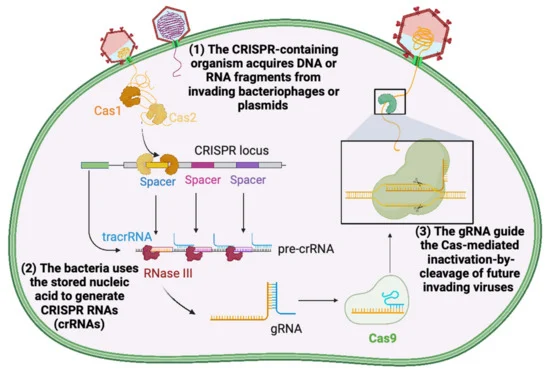Introduction
In today’s fast-paced world, technology continues to evolve and reshape various aspects of our lives. Among the many technological advancements, CRISPR technology stands out as a groundbreaking innovation in the field of genetics and biotechnology. If you’ve ever wondered, “What is CRISPR technology?” and how it’s changing the landscape of genetic engineering, you’ve come to the right place. In this article, we’ll explore the fascinating world of CRISPR, its history, applications, and its potential to revolutionize medicine, agriculture, and more.
Understanding CRISPR: The Basics
The Origins of CRISPR
CRISPR, which stands for Clustered Regularly Interspaced Short Palindromic Repeats, is a genetic engineering technique that was originally discovered in bacteria. Scientists stumbled upon this intriguing system while studying how bacteria defend themselves against viruses. They noticed that bacteria had a unique way of storing snippets of viral DNA within their own genome, essentially keeping a record of their past viral encounters. This system was named CRISPR, and it piqued the curiosity of researchers worldwide.
How CRISPR Works
At its core, CRISPR technology is a highly precise tool for editing genetic material, such as DNA or RNA. It utilizes a molecule called RNA, which acts as a guide, to target specific sequences of genetic code within an organism’s genome. When this guide RNA is paired with a protein called Cas9, it forms a CRISPR-Cas9 complex. This complex acts like a pair of “genetic scissors,” allowing scientists to cut, add, or replace specific DNA sequences with remarkable precision.
Applications of CRISPR Technology
The versatility of CRISPR technology is astounding, making it a valuable tool in a variety of fields.
- Medicine
In medicine, CRISPR has the potential to revolutionize the treatment of genetic diseases. Researchers are exploring ways to correct genetic mutations that cause conditions like cystic fibrosis, sickle cell anemia, and muscular dystrophy. This could lead to life-changing therapies and improved quality of life for millions of individuals.
- Agriculture
Agriculture is another domain where CRISPR technology is making waves. Scientists are using CRISPR to engineer crops that are more resistant to pests, diseases, and adverse environmental conditions. This can enhance food security, reduce the need for chemical pesticides, and potentially address global hunger issues.
- Biotechnology
Beyond medicine and agriculture, CRISPR technology has numerous applications in biotechnology. It can be used to create genetically modified organisms (GMOs) for various purposes, such as producing pharmaceuticals, biofuels, or bioplastics. CRISPR also plays a pivotal role in advancing our understanding of genetics and biology.
The CRISPR Revolution: A Game-Changer in Genetic Engineering
The emergence of CRISPR technology has transformed genetic engineering into a more accessible and efficient process. Traditionally, genetic modification required extensive time, resources, and specialized skills. CRISPR technology has democratized genetic engineering, allowing researchers from various fields to work with unprecedented precision and speed.
Potential Ethical and Moral Concerns
While the potential of CRISPR technology is undoubtedly exciting, it also raises important ethical and moral questions. One of the most pressing concerns is the prospect of “designer babies.” As CRISPR technology advances, there’s a possibility that it could be used to modify the genes of unborn children to enhance their physical and intellectual traits. This has sparked debates about the ethical boundaries of genetic editing and the potential consequences of playing with the fundamental building blocks of life.
Furthermore, there are concerns about the ecological impact of genetically modified organisms (GMOs) created using CRISPR technology. While GMOs can offer significant benefits in terms of crop yield and disease resistance, there is a need for rigorous safety assessments to ensure that unintended consequences on ecosystems are minimized.
The Future of CRISPR Technology
As CRISPR technology continues to evolve, its potential applications seem limitless. Scientists are working tirelessly to refine the technique, enhance its accuracy, and expand its capabilities. Beyond medical and agricultural applications, CRISPR is being explored for its potential in combating infectious diseases, developing novel therapies, and advancing our understanding of fundamental biological processes.
Researchers are also developing variations of CRISPR, such as CRISPR-Cas12 and CRISPR-Cas13, which offer unique advantages and capabilities. These variations open up new possibilities for targeted gene editing and diagnostic tools, promising breakthroughs in the fields of healthcare and biotechnology.
Conclusion
CRISPR technology represents a monumental leap forward in genetic engineering. Its ability to precisely edit genetic material holds immense potential for addressing genetic diseases, enhancing food production, and driving innovations in biotechnology. However, with great power comes great responsibility, and ethical considerations must guide its applications. As we stand on the brink of a new era in genetics, it’s essential to approach the development and use of CRISPR technology with careful consideration of its societal and environmental impacts. The journey of CRISPR is just beginning, and its full potential is yet to be realized, but one thing is certain: it has forever altered the landscape of genetic engineering.


